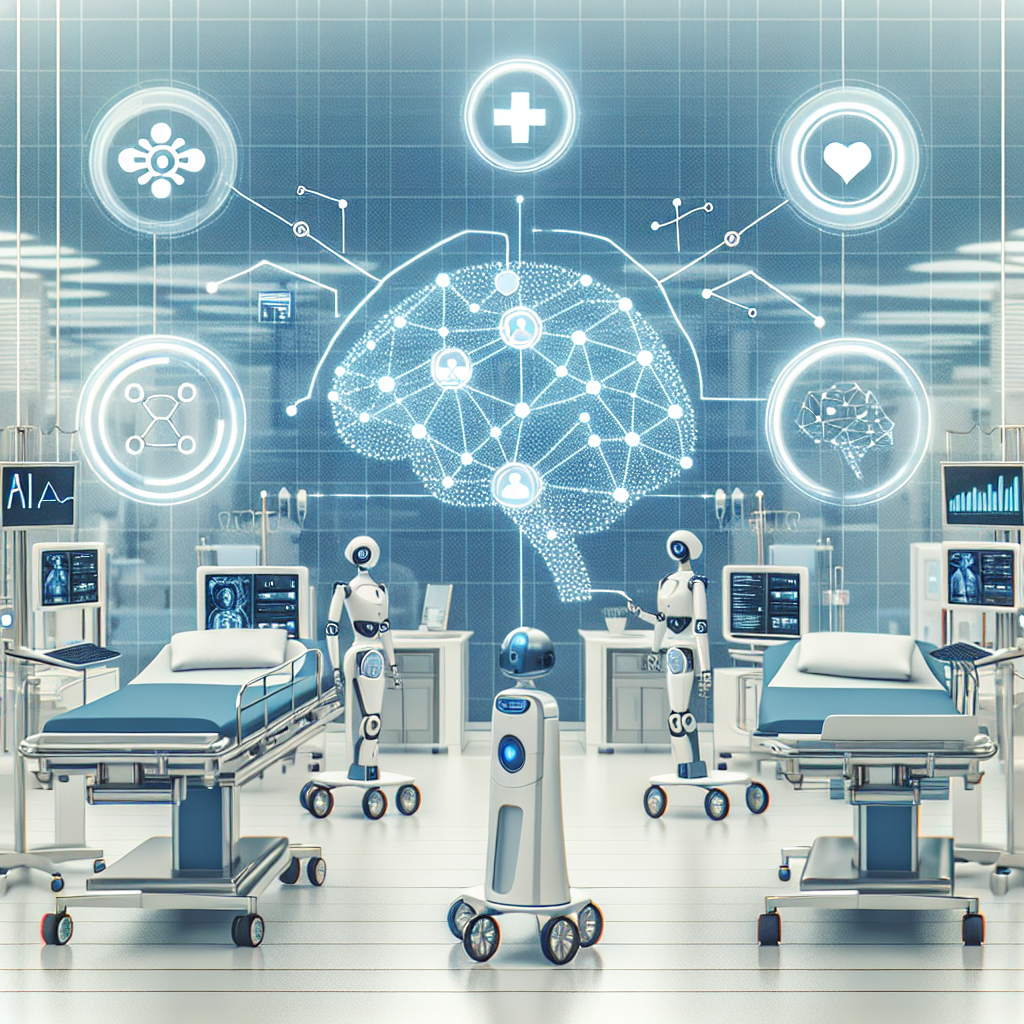Artificial intelligence (AI) and machine learning have revolutionized various industries, including healthcare. The use of AI and machine learning in healthcare robotics has the potential to transform the way medical services are provided, improving patient care, reducing costs, and increasing efficiency. In this article, we will explore the relationship between AI and machine learning in healthcare robotics, discussing the latest innovations, challenges, and future prospects.
AI and Machine Learning in Healthcare Robotics
Healthcare robotics refers to the use of robots in medical settings to assist in patient care, surgery, rehabilitation, and other healthcare tasks. AI and machine learning technologies have enabled these robots to perform complex tasks with precision and efficiency, making them valuable tools in the healthcare industry.
AI is the ability of machines to perform tasks that typically require human intelligence, such as learning, reasoning, problem-solving, and decision-making. Machine learning is a subset of AI that uses algorithms to analyze data, identify patterns, and make predictions without being explicitly programmed. When combined, AI and machine learning can enhance the capabilities of healthcare robots, enabling them to provide personalized care, assist in surgical procedures, and improve patient outcomes.
One of the key applications of AI and machine learning in healthcare robotics is in surgical robotics. Robotic surgery systems, such as the da Vinci Surgical System, use AI algorithms to assist surgeons in performing minimally invasive procedures with greater precision and control. These systems can analyze real-time data, provide feedback to the surgeon, and adjust the robot’s movements to ensure optimal outcomes for the patient.
Another area where AI and machine learning are making a significant impact is in medical imaging. AI algorithms can analyze medical images, such as X-rays, MRIs, and CT scans, to detect abnormalities, diagnose diseases, and assist radiologists in interpreting complex images. This technology can help healthcare providers make more accurate diagnoses, leading to earlier detection of diseases and improved patient outcomes.
In addition to surgical robotics and medical imaging, AI and machine learning are also being used in healthcare robotics for tasks such as patient monitoring, medication management, and rehabilitation. For example, robotic exoskeletons powered by AI algorithms can assist patients with mobility impairments in walking and performing daily activities. These devices can adapt to the patient’s movements, provide feedback on their progress, and adjust the level of assistance as needed.
Challenges and Future Prospects
While the use of AI and machine learning in healthcare robotics holds great promise, there are several challenges that need to be addressed to fully realize the potential of these technologies. One of the main challenges is the integration of AI algorithms into existing healthcare systems and workflows. Healthcare providers need to be trained on how to use AI-powered robots effectively and trust their capabilities to improve patient care.
Another challenge is ensuring the accuracy and reliability of AI algorithms in healthcare robotics. Machine learning models need to be trained on large datasets of medical images, patient records, and other healthcare data to ensure they can make accurate predictions and decisions. Additionally, these models need to be regularly updated and validated to account for changes in patient populations, disease patterns, and treatment protocols.
Despite these challenges, the future prospects of AI and machine learning in healthcare robotics are promising. As technology continues to advance, we can expect to see more sophisticated robots that can perform a wider range of tasks, such as conducting surgeries autonomously, delivering medications to patients, and providing personalized care plans based on individual patient data.
FAQs
1. What are the benefits of using AI and machine learning in healthcare robotics?
The benefits of using AI and machine learning in healthcare robotics include improved patient outcomes, reduced costs, increased efficiency, and enhanced precision in medical procedures. These technologies can help healthcare providers make more accurate diagnoses, personalize treatment plans, and deliver better care to patients.
2. How are AI and machine learning algorithms integrated into healthcare robotics?
AI and machine learning algorithms are integrated into healthcare robotics by programming them into the robot’s software and hardware systems. These algorithms can analyze data from sensors, cameras, and other sources to make decisions, provide feedback, and adjust the robot’s movements in real-time.
3. What are some examples of AI-powered robots in healthcare?
Some examples of AI-powered robots in healthcare include surgical robots, medical imaging systems, patient monitoring devices, and robotic exoskeletons. These robots use AI algorithms to assist healthcare providers in performing medical procedures, diagnosing diseases, monitoring patients, and providing rehabilitation services.
4. How can healthcare providers benefit from using AI and machine learning in robotics?
Healthcare providers can benefit from using AI and machine learning in robotics by improving patient care, reducing costs, and increasing efficiency. These technologies can help providers make more accurate diagnoses, personalize treatment plans, and deliver better care to patients, leading to improved outcomes and higher patient satisfaction.
In conclusion, the relationship between AI and machine learning in healthcare robotics is a rapidly evolving field with the potential to transform the way medical services are provided. By integrating these technologies into robots, healthcare providers can improve patient care, reduce costs, and increase efficiency in delivering healthcare services. While there are challenges that need to be addressed, the future prospects of AI and machine learning in healthcare robotics are promising, offering new opportunities to enhance patient outcomes and revolutionize the healthcare industry.

